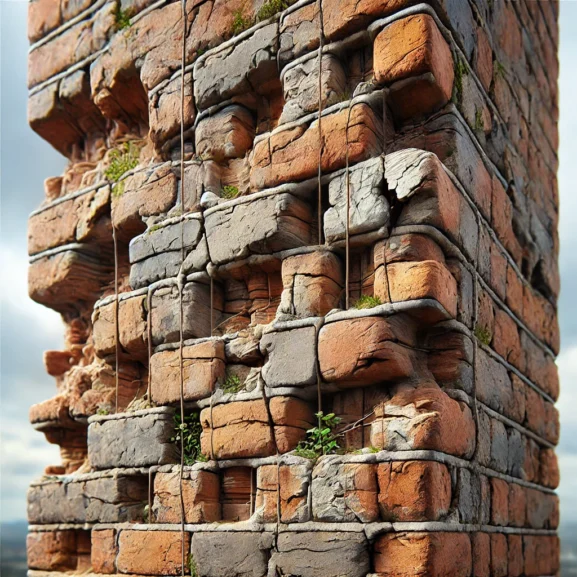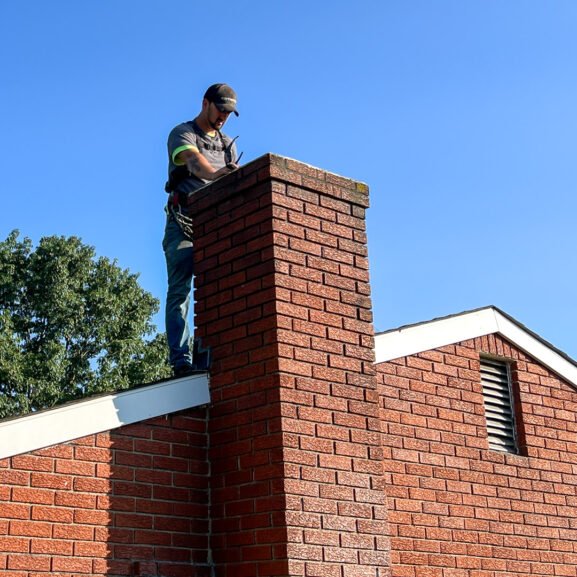Prevent Water Damage: Fix Damaged Chase Covers Allowing Water into Chimneys
Imagine cozying up by the fireplace, only to discover water trickling down the chimney. It’s a homeowner’s nightmare, often caused by damaged chase covers. These essential components shield our chimneys from the elements, yet they’re frequently overlooked until problems arise. When chase covers fail, they allow water to seep in, leading to costly repairs and potential structural damage.
Understanding the importance of a well-maintained chase cover is crucial for preserving the integrity of our chimneys. In this text, we’ll explore how damaged chase covers can compromise chimney systems and what steps we can take to prevent water intrusion. By addressing this issue proactively, we can ensure our chimneys remain safe and functional for years to come.

The Ultimate Guide to Chase Covers in Home Design
Chase covers protect chimneys, keeping water out and ensuring structural integrity. Damaged covers can lead to water intrusion, causing pesky moisture-related issues. Nobody likes dealing with soggy insulation, so let’s keep that at bay.
Importance of Chase Covers
- Chimney Protection: Chase covers stop water and debris from entering. They safeguard against rust and deterioration.
- Weatherproof Materials: Use quality materials like stainless steel for lasting defense against weather. It’s like a superhero shield for your chimney!
- Roofline Concerns: Proper fit at the roofline is vital. Poor installation can make things leak faster than a sieve.
Maintenance Tips
- Regular Inspections: Spot damage early with inspections. Look for rust, corrosion, or any signs of water dripping down.
- Cleanliness: Ensure no debris is clogging drainage solutions or vents. Chimney sweeping isn’t just for Santa!
Professional Solutions
Avoid DIY pitfalls. It’s always best to consult professionals. We offer expert advice and can handle flashing issues with ease. Reach out to certified professionals for consultation. For more on fire safety standards, check out the National Fire Prevention Association guidelines. Also, learn about protecting home structures at the Chimney Safety Institute of America.
Don’t gamble with moisture-risk! Handle chimney repairs and keep your chimney happy, healthy, and dry. Let’s leave the drama to the movies.
Causes of Damage
Weather Conditions
Weather can be a real prankster! It loves to mess with chase covers, leading to water intrusion. We’ve got frigid winters and scorching summers. These extreme temps cause chase covers to expand and contract. This process weakens them over time. Hailstorms and heavy winds also play a part, smacking covers around and causing dents or cracks. These issues compromise chimney protection. Regular inspection after storms is crucial. Visit the Chimney Safety Institute of America for tips. Let’s keep those chimneys happy, even when the weather gets wild.
Reach out to certified professionals for consultation
Material Wear and Tear
Not all materials are created equal when it comes to lasting chimney protection. Chase covers, especially those made of galvanized steel, wear down over time. Rust, corrosion, and oxidation take their toll, leading to holes or gaps. Stainless steel and weatherproof materials provide better resilience. Making smart material choices prevents moisture-related issues and reduces the need for frequent repairs. For more reasons to choose long-lasting materials, check out the National Fire Protection Association. Consider upgrading to prolong the life of your chimney.
Don’t wait—contact us for advice on the best materials for your chimney.
Structural Issues
Structural problems in the chimney or roofline can spark troubling chase cover damage. Poor installation often results in water intrusion, as flashing issues might leave gaps for water to sneak through. Settling houses also introduce complications by changing dimensions. This misalignment compromises structural integrity and loosens the chase cover. Stay proactive and keep a watchful eye for these hitches. Take control before they spiral into costly chimney repairs. Our team ensures your flashing and installations are spot-on.
Reach out to us for expert assessments and professional guidance.

Signs of Water Leaking into Chimneys
Damaged chase covers can lead to water intrusion into chimneys, causing various warning signs. Noticing these signs early can prevent costly chimney repairs and structural integrity issues. Let’s jump into the telltale signs.
Visible Rust Stains
Rust stains often appear on the outside of chimneys when water seeps through damaged chase covers. These stains, appearing as streaks of orange or reddish-brown, are more than just eyesores. They signal potential moisture-related issues inside the chimney. Rust can weaken structural components, compromising chimney protection over time. If you spot rust, it’s time to call in the professionals.
Discoloration Around the Fireplace
Water leaking through chimney structures can cause discoloration around fireplaces. Dark patches or white efflorescence—those fluffy white deposits—could cover the area. Don’t ignore these signs as mere aesthetic problems; they indicate water intrusion risks. Discoloration can lead to mold and unpleasant smells. Ensure waterproofing solutions are in place to protect your home from these issues. Need advice? We’re here to help.
Deterioration of Chimney Structure
Water can cause bricks to crumble and mortar joints to weaken, potentially leading to structural integrity concerns. Cracks or missing mortar in the chimney structure might go unnoticed initially but can escalate into severe issues without timely maintenance. It’s essential to regularly inspect and maintain chimneys, especially in varied climate. Proactive care helps avoid expensive repairs down the road.
Impacts of Water Damage
Water intrusion isn’t just bad for chimneys; it can lead to significant problems. When chase covers fail, chimneys face multiple issues, making timely repairs crucial.
Chimney Integrity Risks
Chimneys require solid protection to remain functional. Damaged chase covers can compromise structural integrity. Rain entering through breaches can weaken bricks and mortar, and you’ll notice early signs like cracks or loose bricks. We emphasize using quality materials for chase covers, like stainless steel, to prevent these issues. It’s not just about aesthetics; it’s about safety. If you’ve got roofline concerns or flashing issues, don’t delay repairs. Reach out to certified professionals for consultation. Always keep in mind, proper installation and weatherproofing solutions can guard against further damage. For more information on chimney safety, visit Chimney Safety Institute of America.
Mold and Mildew Growth
Mold loves moisture, and damaged chase covers can invite it into your chimney. This growth can lead to unpleasant odors and health hazards. A humid climate often adds to the issue. Spotting discoloration around your fireplace is a giveaway. It might look like art, but it’s not the kind you’ll want to hang on your walls. Clear drainage solutions are vital in preventing this. Regular maintenance tips, like cleaning your chimney and checking for leaks, keep mold at bay. For comprehensive guidelines, the National Fire Protection Association provides valuable insights. Remember, mold should meet professionals, not your lungs, so give us a call for free consultation.
Maintaining chimney protection is essential, ensuring the enjoyment of cozy fires without the stress of water woes.

Repair and Replacement Options
Let’s face it, damaged chase covers mean trouble for your chimney. But don’t worry, we’ve got the lowdown on fixing this problem before it turns into a disaster. Here’s how to keep water out and your chimney solid.
Hiring a Professional
When dealing with chase cover damage, hiring a professional is the best move. Experts ensure proper installation, safeguarding against water intrusion and other moisture-related issues. They’re trained to spot problems we might miss, and their experience means a more durable fix.
Professionals can handle:
- Chase cover replacements with high-quality materials.
- Precise repairs for flashing issues and roofline concerns.
We encourage everyone to seek professional guidance due to specific weather challenges. To learn more about chimney safety, check out the Chimney Safety Institute of America and the National Fire Prevention Association.
Preventive Measures
Regular maintenance keeps chase cover damage at bay, preserving chimney protection. Ignoring it? Expect water intrusion and structural integrity issues. Shifting weather, from snowy winters to rainy springs, makes this crucial.
Inspect chase covers biannually. Easier than spotting Santa in July! Small issues can lead to big, moisture-related problems if left unchecked. Think rust and corrosion on your radar.
Here’s a handy checklist:
- Weatherproof materials like stainless steel fend off rust. Galvanized covers tend to wear out faster.
- Check for flashing issues and roofline concerns. Don’t let them sneak by—even if they’re sneakier than your kids before bed.
- Regularly clear drainage solutions. Blockages aren’t friends with your chimney.
Need a fix? Remember, no DIY here. It’s best left to the pros. Chimney repairs aren’t for the faint-hearted. Reach out to certified professionals for consultation.
Our friends at the National Fire Protection Association and the Chimney Safety Institute of America agree: Prevention is key. Чер_with an extra dose of humor, we ensure your chimney stands tall all season.
Conclusion
Our chimneys stand as vital structures in our homes, and maintaining their integrity is crucial. Damaged chase covers pose significant risks, from water intrusion to structural compromise. By prioritizing regular inspections and using durable materials like stainless steel, we can effectively safeguard our chimneys against these threats. Professional assistance ensures that repairs and installations are done correctly, preventing further issues. Let’s commit to proactive maintenance, leveraging expert guidance when needed, to keep our chimneys safe and functional for years to come.
Frequently Asked Questions
What is a chimney chase cover?
A chimney chase cover is a metal covering installed at the top of a chimney chase to protect it from external elements like water, debris, and animals. The cover helps prevent water intrusion, which can cause significant damage to the chimney structure and lead to costly repairs.
Why are chase covers important for chimneys?
Chase covers are crucial as they prevent water from entering the chimney, which can cause rust, structural damage, mold growth, and unpleasant odors. They also keep debris and animals out, maintaining chimney functionality and safety over time.
How can I tell if my chase cover is damaged?
Signs of a damaged chase cover include visible rust stains, discoloration around the fireplace, water leaks, and deterioration of the chimney structure. Regular inspections can help identify these issues early, preventing extensive damage.
What are the causes of chase cover damage?
Chase cover damage is often caused by adverse weather conditions such as extreme temperatures, hailstorms, and heavy winds. Material wear and tear, as well as poor installation or structural settling, can also lead to damage over time.
What materials are best for chase covers?
Stainless steel is the preferred material for chase covers due to its durability and resistance to rust and corrosion. Unlike galvanized steel, it offers long-lasting protection against various weather conditions.
Can I repair a chase cover myself?
DIY chase cover repairs are not recommended. Improper repairs can exacerbate issues, leading to more significant problems. It’s best to hire professionals who can ensure proper installation and use high-quality materials.
How often should chase covers be inspected?
Chase covers should be inspected biannually to identify and address small issues before they become significant problems. Regular checks help maintain the chimney’s structural integrity and prevent moisture-related damage.
What are the signs of water leaks from a chimney?
Signs of water leaks include visible rust stains, discoloration on the chimney walls, and crumbling bricks or mortar. Unpleasant odors and mold growth may also indicate moisture intrusion, requiring immediate attention.
What are the consequences of ignoring chase cover maintenance?
Ignoring chase cover maintenance can lead to severe issues such as structural damage, mold growth, and expensive repairs. Regular inspections and maintenance are key to ensuring chimney longevity and safety.
Why is professional installation important for chase covers?
Professional installation ensures the chase cover is installed correctly, addressing specific issues like flashing and roofline concerns. Experts use high-quality materials and ensure the cover provides optimal protection against weather elements.


